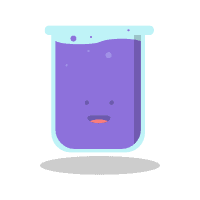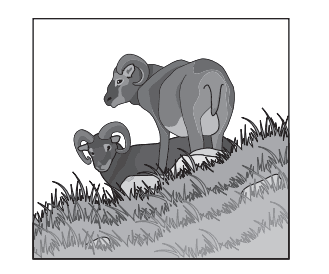
TEKS Grade 8 Science - B.11.B Environmental Change
Quiz by Grade 8 Science - Texas Education Agency
Grade 8
Science (2017)
Texas Essential Knowledge and Skills (TEKS)
Feel free to use or edit a copy
includes Teacher and Student dashboards
Measures 1 skill from
Measures 1 skill from
Track each student's skills and progress in your Mastery dashboards
With a free account, teachers can
- edit the questions
- save a copy for later
- start a class game
- automatically assign follow-up activities based on students’ scores
- assign as homework
- share a link with colleagues
- print as a bubble sheet
12 questions
Show answers
- Q1Wild Soay sheep live in a cold environment on a small Scottish island. The sheep used to be large because they gained extra weight during the summers in order to survive the harsh winters. A recent change in the island’s climate has caused grass to be available for a longer period each year, so survival conditions for the sheep have become less challenging. Researchers who study these sheep have most likely observed a decrease in the wild Soay’s —reproduction ratessizebody temperaturelife expectancy60s8.11b
- Q2Some scientists studying aquatic plants notice that flooding often leads to a decrease in the rate of photosynthesis among aquatic plants. Flooding causes more sediment to be suspended in the water. The increased sediment concentration decreases the amount of light that reaches the plants. Why does a decreased rate of photosynthesis lead to a decrease in a plant population?Less water is available for absorption.Less soil is available for leaf development.Less energy is available for reproduction.Less tissue is available for plant growth.60s8.11b
- Q3The Guam rail is a flightless bird found on the island of Guam. It builds a shallow nest on the ground and lays eggs throughout the year. There are no native species of snakes on Guam, so the Guam rail had no experience with snake predators until the brown tree snake was accidentally introduced sometime between 1944 and 1952. These snakes, which eat a wide variety of animal species, quickly established a large population on Guam. How was the Guam rail most likely affected by the introduction of the brown tree snake?The Guam rail quickly developed the ability to fly in order to escape from the brown tree snake.The brown tree snake ate only species that lived in trees, so it had no effect on the Guam rail.The population of the Guam rail declined, and the species nearly became extinct.The Guam rail began to build its nests in trees.60s8.11b
- Q4Scientists are studying the effects of climate change on the Baltic Sea. Some scientists predict that if current trends continue, the Baltic Sea will become less salty, and it will contain less dissolved oxygen. As a result of these changes, the Baltic Sea will have less biodiversity. The location of the Baltic Sea is shown on the map below. Which statement best explains why biodiversity in the Baltic Sea could decrease if these changes occur?Fewer types of plants and animals are found in warm water than in cool water.Plants and animals adapted for living in saltwater will grow more slowly in water that has less salt.Animals adapted for living in warm water will eat all the plants and animals adapted for living in cool water.Plants and animals adapted for living in saltier conditions will not be able to survive and reproduce.60s8.11b
- Q5Copper compounds are used in large amounts to control the growth of algae and other aquatic plants. Copper interferes with photosynthesis in these organisms. What would be the most likely result of an accidental spill of these compounds in an aquatic environment?The fish would grow larger than usual.The plant populations would be reduced.The plants would increase in size but decrease in number.The zooplankton population would increase60s8.11b
- Q6DDT is a pesticide that was once widely used to control agricultural pests and mosquitoes. However, this pesticide caused the eggshells of certain birds, including the brown pelican, to become fragile and thin. The adults would then accidentally crush the eggs while trying to incubate them. What happened to brown pelican populations as a result of DDT use by humans?The populations increased as pelicans laid more eggs so that more offspring would survive.The populations increased much more slowly.The populations decreased as fewer eggs survived long enough to hatch.The populations remained stable over time.60s8.11b
- Q7Which of the following is most likely to cause a change in the genetic traits in an isolated population of a ground-dwelling lizard species?The exposure of an individual lizard in the population to radiation that causes a mutation that is not passed on to its offspringA fast-moving wildfire that burns the canopy of the trees in the lizard population’s ecosystemAn unusually dry summer in the lizard population’s ecosystemThe introduction of an invasive predator that preys on the brightest-colored individuals in the lizard population60s8.11b
- Q8Before the Industrial Revolution in England, the peppered moth was commonly found on tree trunks that had light-colored lichen on the bark. Most of the peppered moths were a light gray-brown color similar to that of the lichen. A few of the moths had a mutation that made them a dark gray-brown color During the Industrial Revolution, coal-burning factories produced black soot that covered the trees and killed the lichen in and near cities. In these areas the number of dark peppered moths increased, while the number of light peppered moths decreased. What contributed to this change?The dark moths preyed on the light moths.The soot-covered trees camouflaged the dark moths.Bird populations increased in the areas near the factories.The dark moths laid fewer eggs than the light moths.60s8.11b
- Q9Galveston Bay, an estuary in Southeast Texas, is shown below. The amount of salt in the water changes with the tides. Sometimes the water is mostly freshwater, and sometimes it is mixed with saltwater. Various plant species live in this environment and provide a habitat for other organisms. To successfully live in an estuary, a plant species must have an adaptation that allows it to —absorb large amounts of waterstore excess gasesfilter excess saltproduce large amounts of food60s8.11b
- Q10The types of small organisms that live on the bottom of streams can be good indicators of water pollution. The table below groups some organisms by their tolerance of pollution. A certain stream that was historically clear and clean has become increasingly polluted with fertilizer waste over the years. Which of these describes a likely result of this pollution?Riffle beetles have become more abundant in the stream.Mayflies that were previously abundant are no longer present in the stream.Stone flies and midges thrive and compete for the same food source.Large numbers of crayfish have suddenly died.60s8.11b
- Q11The white-tailed ptarmigan lives at high elevations on mountains that receive a lot of snow in the winter. During the summer, the ptarmigans’ feathers are mottled brown. The birds lose the brown feathers and grow a new set of white feathers during the winter. Scientists are concerned that rising global temperatures will affect the white-tailed ptarmigan. If global climate change leads to the elimination of snow in the habitat of white-tailed ptarmigans, which adaptation is most likely to occur over many generations?Birds with brown feathers will be easier to see on the ground in the winter. Over time this could lead to white-tailed ptarmigans that have brown feathers throughout the year.Birds with white feathers in areas without winter snow will be easier for predators to find. Over time this could lead to white-tailed ptarmigans that have brown feathers throughout the year.Birds with white feathers will be easier to see on the ground in the summer. Over time this could lead to white-tailed ptarmigans that have white feathers throughout the year.Birds with brown feathers in areas without winter snow will be easier for predators to find. Over time this could lead to white-tailed ptarmigans that have white feathers throughout the year.60s8.11b
- Q12The organism in the photo is a daphnia, or water flea. Daphnia are tiny aquatic organisms that live in most freshwater habitats. Adults range from less than 1 to 5 mm in length. They are good swimmers and eat mostly algae. Daphnia become mature at 5 to 10 days, and an adult female can produce up to 100 eggs every 3 or 4 days during its 2-month life span. When harmful algae rapidly increase in the daphnia’s environment, daphnia can develop adaptations to tolerate the negative effects of the algae within 10 years. What characteristic of the daphnia allows the population to adapt to environmental change?Its small sizeIts freshwater environmentIts short generation timeIts herbivorous diet60s8.11b
